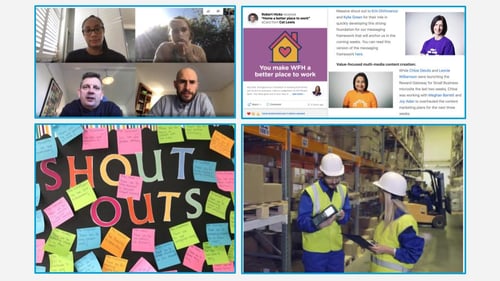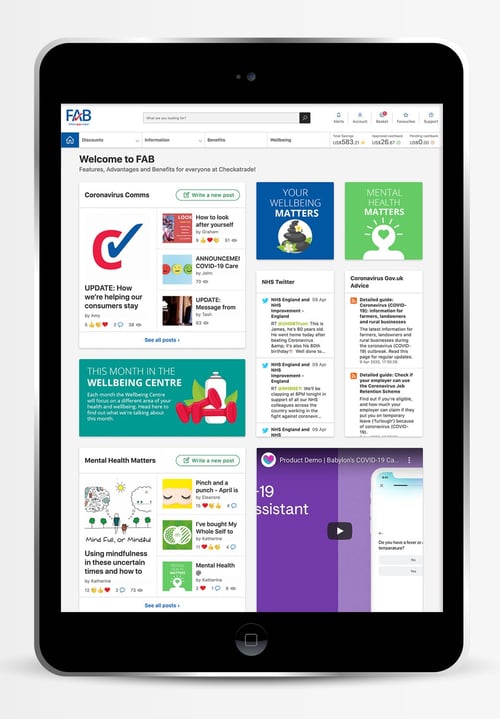5 min read
Every day, companies around the world are learning to adapt and evolve as crises emerge. Yet, in spite of challenges and constraints, many organisations are learning how to adapt to ensure sustainable success.
They are pivoting, innovating and strengthening their teams in the midst of crisis. What do these organisations have that their competitors don’t?
Leaders — and employees — who are change-makers at heart.
Change-makers are people who are equipped and willing to mobilise others to make positive, impactful change.
When everyone else is focused on business continuity planning, change-makers focus on culture continuity and ensuring their organisation has what it takes to weather the storm and get to the other side stronger than ever.

Change-makers are the leaders who make a long-lasting impact on culture and capability in their organisations. They inspire and motivate employees with a united purpose, leading their people through uncertainty with clarity and connection.
To achieve this, they embody and practice three key characteristics that help them nurture an environment that is ripe for change and prepared to adapt.
1. Change-makers put people and connection first
These leaders take the time to listen to employees and welcome candid conversations about what is and isn’t working in the current environment. They model the behaviour they seek in their people leaders by connecting with their direct reports weekly, even if they’re working remotely now – whether that’s through a video-conferencing tool, or a good old-fashioned phone call.

Change-makers prioritise and strengthen the employer-employee relationship with communication channels that enable two-way feedback.
While others still rely on all-staff emails, they’re tapping into the power of video, messaging tools, employee comments on internal blogs and employee survey tools to check the pulse of their organisation regularly.
This helps them identify which levers to pull to motivate employees, keep them focused and productive and move the needle on employee engagement within their organisation in a faster, more agile way.
 There are many ways to discover which teams need support the most. Change-makers keep their fingers on the pulse of their employees through surveys or telling insights, using data to determine the areas of their business where communications are or aren't reaching, so they can explore options of channels to ensure that important company, safety, wellbeing or culture updates are read.
There are many ways to discover which teams need support the most. Change-makers keep their fingers on the pulse of their employees through surveys or telling insights, using data to determine the areas of their business where communications are or aren't reaching, so they can explore options of channels to ensure that important company, safety, wellbeing or culture updates are read.
2. Change-makers mobilise and problem solve
Change-makers have effective change management strategies in their toolkit and avoid a scattergun approach to crisis management. They prioritise and focus, and look for resources that already exist within their business to get things started. Change-makers take their people on the journey one step at a time.
While others are focused on limitations, change-makers focus instead on what can still be achieved in spite of constraints.
They shift their mindset, reframing the obstacles they’re currently facing as an opportunity to refine your goals and focus on one or two important projects that will make a big impact on your people’s morale or your business success.
Change-makers identify and connect with the ambassadors or champions within their organisation — employees who are already engaged and can bring others along on the journey. These ambassadors are well aware and still connected to your company mission, ready to innovate and work differently, and have a natural growth mindset, so they can positively impact culture, overcome obstacles and showcase growth mindsets during times of crisis.
They are the ones who focus on the good news story, and focus on problem solving instead of problem finding. To make sure they’re ready to help you make waves and move your business forward, mobilise your ambassadors by getting them involved and take a moment to create visibility of their contribution and progress as it happens to inspire others.
Because behaviour that gets recognised, gets repeated.
3. Change-makers humanise and embrace technology
As more and more organisations transition to remote or hybrid work, change-makers look for opportunities to connect people digitally.
To support their people and provide a sense of stability and consistency even as things outside of work change, they make it easy for employees to find and access information that supports them through this time. Whether it’s links to financial or mental wellbeing resources, updated policy documentation or a feed of good news stories from around your business, they do their best to give employees information wherever they are, whenever they need to access it, like this hub from our client Checkatrade:

They create online spaces where their culture and community can flourish and their employees can 'gather' and interact with each other.
These online spaces act as “digital campfires” where employees know they can find the information they need to get their job done; gain visibility about what is happening in other areas of the business; interact with each other through blog posts, comments, and social responses; and add to the stories of success through continual employee recognition.

HR change-makers look for and leverage the types of tools that empower and enable better employee connection. Their constant goal is to connect their people, unite them under a common purpose and consistently recognise progress to keep them motivated and on track.
Whether that’s explaining current business strategy through leadership communications, or by keeping them up to date on important HR updates so they feel informed and reassured by their employer, connection is always at the forefront.
As the outside pressure increases for many organisations, change-makers can take that pressure in their stride and find ways to put their people first. Change-makers understand their people are missing human connection (think of the "Belonging" tier in Maslow's Hirearchy of Needs), so they focus on a sense of purpose and belonging.
They achieve this by focusing on humanising connection through a variety of methods, such as daily video updates from leaders linked back to your mission. By listening to the needs of their employees, focusing on the initiatives that will keep them motivated and engaged during this time, and leveraging technology to enable connection and support, their teams will weather this season and be ready for whatever the future brings.
Thank you to all the change-makers who continue to inspire their people through times of crisis!
 Kylie Green
Kylie Green



